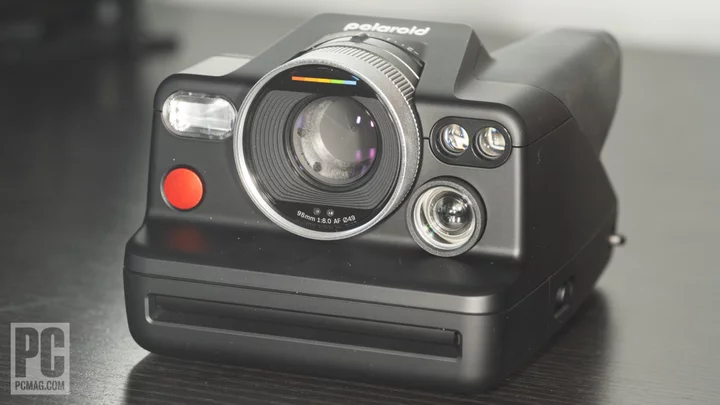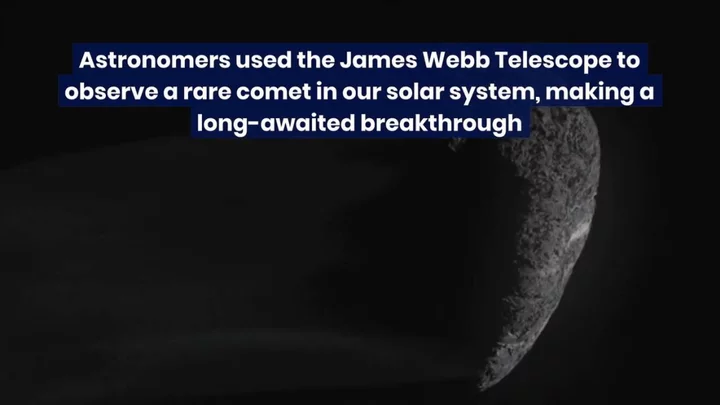The Polaroid I-2 ($599.99) is the first pro-grade instant camera from the present-day version of the company that invented the concept of self-developing snapshots. Its premium price, full manual exposure operation, and high-quality lens are all departures from the basic cameras that we've come to expect from Polaroid, like the Now+. It's a product ultimately more in line with the company's pricey film that fans of the format should enjoy. That said, if you aren't prepared to deal with the cost and general hassle of Polaroid film, the pro-minded Instax Square Nons SL660 ($599) is a suitable alternative with manual controls and quality optics.
An Instant Polaroid Refresher
The Polaroid brand is historic: Edwin Land released the first instant camera in 1948 and it didn't take long for Polaroid to become synonymous with any instant snapshot. The company thrived through the heydays of analog photography, but nothing lasts forever and it entered bankruptcy in early 2001. The brand name was sold off and eventually slapped onto all kinds of cheap tech, ranging from Android tablets to drones. Instant film production stopped in 2008, and that looked like the end of the brand.
(Credit: Jim Fisher)But it wasn't. The Impossible Project launched to bring the film back to the market and released its first packs in 2010. Its founders took inspiration from a quote from Land: "Don't undertake a project unless it's manifestly important and fundamentally impossible." It's an appropriate one since some of the chemicals used to make the film were discontinued due to RoHS regulations. Thus, the project had to create new film formulas. For more details, read our report on Impossible from 2015. Since then, the company has rebranded twice, first to Polaroid Originals and now back to Polaroid.
I-2 Marks a Return to Serious Instant Cameras
Impossible's first hardware effort, the I-1, received mixed reviews upon release. The camera had some ambitious features for the time, including a lens with five zones of focus for close-ups, but restricted manual exposure control to a smartphone companion app. The I-2 is a ground-up redesign, with a new lens, LiDAR autofocus, and on-camera exposure control. It's a major departure from the one-button Polaroid cams that have come out in the interim.
The I-2 (right) is an all-new camera, not a rehash of the I-1 (left) (Credit: Jim Fisher)By the numbers, the I-2 measures 3.6 by 4.7 by 5.9 inches (HWD) and weighs about 1.2 pounds. The camera body is mostly plastic (with some metal elements) and has a matte-gray finish. It's not cheap plastic, however, and the finish makes for an attractive camera. It also feels sturdier than the plastic Polaroid bodies from the 80s and 90s.
Polaroid is the only company making cameras that take its film these days, and the Now and Now+ are the only others on sale that use I-Type film packs. You can also buy 600 or SX-70 film packs for vintage cameras, but these cost a little bit more because each film pack includes a battery to provide power to the camera, a requirement for older cameras. I tested an SX-70 ($379) that Retrospekt had restored to factory specs last year and enjoyed the experience.
The I-2 (left) includes the manual exposure control missing from cameras like the Polaroid Now+ (right) (Credit: Jim Fisher)Other brands rely on Fujifilm Instax film for their upper-end instant cameras. The versatile Nons SL660 ($599) works with SLR lenses, for example, and accepts Instax Square film. Mint Camera makes folding rangefinders that take Instax Wide or Square film with manual-focus glass lenses. At $899, the square-format Mint InstaKon SF70 is even more expensive than the I-2, though. And remember that you can't use Instax film in a Polaroid camera, or vice versa.
Full Manual Exposure Control
The I-2 is as comfortable to hold as other Polaroid cameras, which is to say it's a little bit bulky and awkward. The squarish footprint makes the bottom of the camera the natural handgrip. I keep three fingers under the camera and my right index finger over the shutter release on the front, which leaves my thumb to rest on the rear info display. To help keep the camera steady when the viewfinder is at eye level, I use my left hand to support it. I'm a left-eye-dominant photographer, which actually makes the I-2 a little easier to hold centered.
(Credit: Jim Fisher)You can also use the camera with a tripod. The I-2 has a standard quarter-inch-twenty tripod thread, a feature that's not available on basic instant models like the Polaroid Now or Fuji Instax Square SQ1. I put it on a Peak Design Travel Tripod for some long-exposure photos in testing but ran into a potential problem: The Fusion Photo Arca-Swiss quick-release plate I use is large enough to prevent the film door from opening. Just remember to carry the appropriate tool to swap out your plate in the field if your equipment calls for it.
The shutter release uses a typical two-stage design. Half-press the red button to engage and set autofocus, and push it in all the way to fire off a photo. Two control rings surround the lens: One dials in EV compensation (from -2 to +2 EV in third stops) and the other sets the aperture or shutter speed.
(Credit: Jim Fisher)The I-2 has a monochrome information display on the rear. Its text is easily legible (I say that as someone who is slightly overdue for new reading glasses) and visible in bright sunlight. It shows the exposure mode (Auto, Aperture, Shutter, Manual, Multi-Exposure, or Self-Timer), aperture, shutter speed, battery level, and number of photos remaining in a loaded film pack. The Multi-Exposure mode lets you put two, three, or four exposures into one frame, so you can experiment with the time-honored photo technique to your heart's content.
(Credit: Jim Fisher)Three rear control buttons sit just under the display. An unlabeled button with a line icon cycles through the different exposure modes or, in Manual mode, swaps the lens control ring between aperture and shutter control. A power button and a toggle for the built-in flash are right below it. The latter has a backlit, lightning bolt icon, so it's easy to tell whether the flash is on at a glance.
(Credit: Jim Fisher)The I-2 also works with external flashes at up to 1/250-second sync speeds, though not via a typical hot shoe interface. Instead, it has a 2.5mm sync port to connect directly to an external strobe or wireless trigger via a cable. I picked up an inexpensive headphone cable from Amazon to try the feature with my PocketWizard PlusX triggers and FlashPoint Xplor 400 Pro monolight and it worked as expected. Most old Polaroid cameras don't work with external strobes and adding a flash socket into a vintage SX-70 isn't easy (though it's possible), so this support gives the I-2 an advantage. However, it's not a unique feature, as the Nons SL660 has a hot shoe for external flashes and also syncs to 1/250-second.
(Credit: Jim Fisher)An internal battery provides power. It charges via USB-C and should last for up to 15 packs of film between charges. I shot three packs before the battery indicator dropped a bar, so that estimate seems pretty accurate. The I-2 also has Bluetooth to connect to the Polaroid smartphone app for remote control, which is available on Android and iOS.
(Credit: Jim Fisher)A Stunning Optical Viewfinder
The optical viewfinder is a real treat. It's very large to the eye, with magnification and brightness that are nearly as good as that of my Leica M (Typ 240). The I-2's OVF appears larger than it is though, due to its square shape and decent amount of coverage beyond the view of the lens. Dark black lines mark the corners of the frame, but be aware there's no parallax correction and the picture area isn't quite centered in the finder. Despite those quirks, the viewfinder is far better than the one in the Now+ or any Fuji Instax model, though it has one drawback of note: There's a dark blue halo visible around its edges. It doesn't take away from the picture quality but may distract you when you're composing a frame.
(Credit: Jim Fisher)The OVF has a dedicated exposure information display as well, just below the image area. The orange-tinted LCD shows the EV compensation, as well as the metered exposure value, the number of shots left in the film pack, the battery life, and the flash status full-time. It also shows the set autofocus distance and an AE-L indicator when you half-press the shutter.
A Triplet Lens With LiDAR Autofocus
Polaroid coaxed a pair of optical engineers who worked at Olympus in the film era out of retirement to design the I-2's optical triplet lens. (If you want to geek out about the lens, Polaroid's 10-minute promotional advertisement for the camera offers lots of details.)
(Credit: Jim Fisher)Its 98mm F8 focal length covers a wide standard angle of view, about 40mm in full-frame terms. The aperture goes down to as small as f/64 in full-stop settings (f/8, f/11, f/16, f/22, f/32, f/45, f/64), and its integral leaf shutter ranges from 30 seconds to 1/250-second. Remember that I-Type film is rated at ISO 640, so you likely need to add a neutral density filter to use it wide open in bright light. The lens blurs backgrounds at wide settings, with a depth of field that's similar to an f/2.8 lens on full-frame bodies, so I recommend picking up a 49mm 3-stop ND filter to get that look on sunny days.
(Credit: Jim Fisher)The lens is autofocus only. If you prefer manual focus, you'll have to hunt down an old SX-70 or pick up the Nons SL660. The LiDAR-based system is accurate in testing. The focus area is marked in the center of the viewfinder, and the information display shows the detected distance (in meters) for a bit of confirmation. The camera focuses quite close for an instant camera, to 0.4 meters.
(Credit: Jim Fisher)The three-element lens uses EP3500 optical plastics rather than glass. The specific material might mean something to polymer engineers, but the results matter more to photographers. Instant photos show noticeably sharper detail versus the single-element lens in the Polaroid Now+ or the Fuji Instax Square SQ1. Images also have a richer texture (especially if you opt for black-and-white film) and can still blur backgrounds for some decent subject isolation.
The autofocus system improves picture quality, too. The I-2 locks focus with stunning precision across its range (0.4m to infinity). It makes for a crisper image than plastic-lens cameras with one or two zones of focus like the Instax Square SQ1 or even glass-lens models that rely on manual scale focus like the Lomo'Instant Square.
(Credit: Jim Fisher)An ambient light meter handles automatic exposure. It covers the central 60% of the frame and is positioned so that it works properly when you add ND or other filters that influence scene brightness.
The meter does a respectable job for scenes where in-camera, reflective meters work well, but backlit scenes and frames that cover deep shadows and bright highlights trip it up. It's worthwhile to measure a scene with your phone (the iPhone Pocket Light Meter app is a lifesaver for this) or an incident meter for those types of pictures.
(Credit: Jim Fisher)I-Type Film Delivers Inconsistent Results
The extra-large Polaroid picture format is the reason to pick an I-2 over the Nons SL660, Mint InstaKon SF70, or other upmarket Instax Square camera. Polaroid film is around 3.1 inches (79mm) square, while Instax is a more meager 2.4 inches (60mm). The larger picture size makes for more impactful snapshots, though it comes at a cost, both in terms of cost and film quality.
(Credit: Jim Fisher)The I-2 supports I-Type, 600 Series, and SX-70 film. The former is the least expensive since it doesn't include a battery in the film cartridge and is rated at ISO 640, but it's still pricey at around $16.99 per pack of 8 photos (around $2 per photo). You can cut per-picture costs by buying in bulk or catching a sale. At press time, for example, you can snag a five-pack of film for $71.99, which cuts the picture cost to about $1.80. For comparison, Instax Square is roughly half as expensive at around $0.95 per picture.
You can also use film made for vintage cameras with the I-2. I don't think it's worth it to spend more on 600 film ($19.99 per pack) for its slightly higher ISO 800 rating, but there are more special edition films available for 600 than I-Type. I tried one of them, Green Duochrome 600, with the I-2. It's no longer in production, but you can try Blue tone film right now, and Round Frame color is usually available. There are fewer special films available in SX-70 format, but it's still worth considering for its ISO 160 speed.
(Credit: Jim Fisher)Costs aside, Polaroid film's picture quality is inconsistent and requires some care to use properly. This is especially true with the color materials, which tend to produce undersaturated images with a very slight brown color cast on warm days and a blueish tint in cold weather, along with some contrast loss if you don't shield the film from light as it develops. Fuji's color Instax Square materials show natural, properly saturated color and don't require you to put them in the dark as they develop.
Polaroid's black-and-white film is easier to use. You still need to pay attention to temperature and it's not a bad idea to shield it, but keeping it away from light is less critical. Contrast is strong, and darker shadows add some weight to photos. For comparison, Fuji Instax Monochrome shows lower contrast for more open shadows.
(Credit: Jim Fisher)But weird things still happen with both film types often enough that there's a Forrest Gump aspect to loading a new pack: Like with a box of chocolates, you never know what you're going to get. Sometimes it's a little defect, like a small off-color patch where the film didn't develop, and other times it's a larger missing piece of the emulsion or a cobweb-shaped splotch of false texture. Be prepared to embrace some imperfections if you want to enjoy the I-2, or modern Polaroid film for that matter.
(Credit: Jim Fisher)And then there's the chance of getting bad film, like I did in testing. One of the packs of black-and-white film I tried just didn't work right from the start. Pictures would either come out of the camera with a dark strip on one side or simply not eject at all. I'm used to little imperfections from Polaroid, but this was extreme. A representative from Polaroid told us its customer service team handles cases on an individual basis, so if you do get a truly bad pack of film it's worth filing a ticket.
(Credit: Jim Fisher)If you haven't used newer Polaroid film before, keep these potential complications in mind and take the time to read Polaroid's advice on getting the most out of its film. It's also worthwhile to follow best practices for storage and transport. You should keep instant film in the fridge, but be careful not to let it freeze; likewise, don't leave it in a hot car or similar environment. Shield it when it's developing, and despite what André 3000 would have you believe, don't shake it. If you're flying, request a hand check for film at the security checkpoint, as X-rays will damage it.
(Credit: Jim Fisher)This One's for Polaroid Film Fans
The Polaroid I-2 marks a new chapter for the current iteration of the company. It's by far the most expensive model to come out since the start of the Impossible Project. The camera offers just about everything you could want, including a sharp lens, a reliable LiDAR autofocus system, and external strobe support for studio work. Yes, the film is pricey and requires care to get quality results, but artists dedicated to the format should be able to look past these shortcomings and enjoy the many positives. Dilettantes should stick with an Instax Square format camera due to its more reliable (and affordable) film stock. We haven't tested the Mint InstaKon SF70, but its folding design reminds us enough of an SX-70 to call it out as a sensible Instax alternative, while the Nons SL660 is available if you want to try an instant camera with interchangeable lenses.









